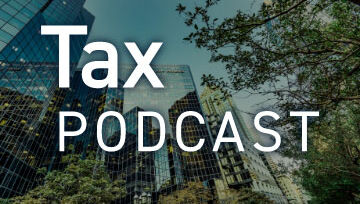Since 2020, many qualifying employers have successfully filed and reaped the benefits of the Employee Retention Credit (ERC) program, designed to help employers that were negatively impacted by the COVID-19 pandemic. The Internal Revenue Service (IRS) has discovered many ineligible ERC claims have been filed throughout the years, with a recent increase due to ERC marketing and promotional scams. This prompted the IRS to introduce new measures that would not only address the backlog of ERC claims, but also substantially reduce the risk of employers and individuals that have erroneously claimed an ERC.
The ongoing moratorium on processing ERC claims represents the latest IRS attempt to address fraudulent claims. During this moratorium, which will continue through at least the end of 2023, the IRS has heightened their review of pending claims. This ensures that ERC claims in process are more thoroughly reviewed.
The IRS is aware of the ERC scammers that have misled well-intentioned employers into believing that they qualify for the program. To protect employers against penalties that could be imposed on fraudulent claims, the IRS will allow employers to withdraw ERC claims without civil or criminal penalties or interest.
ERC Withdrawal Process
While the IRS started accepting withdrawal claims in October 2023, they have not yet announced the end of the program. Until the program ends, the employers are eligible to withdraw their ERC claim if they meet all the following criteria:
- Employer has filed a claim on an adjusted employment return, including Forms 941-X, 943-X, 944-X and CT-1X.
- Employer has adjusted their return to claim the ERC, and no other adjustments have been made.
- Employer wants to withdraw the entire claim amount.
- Employer has either not received their refund check OR has not cashed or deposited their refund check.
Employers that meet the above criteria and either have pending claims or have received a refund check should follow the instructions provided in detail by the IRS. The IRS has provided the following instructions for employers that have pending claims and meet the withdrawal eligibility criteria:
- Taxpayers who filed for the ERC but have not received, cashed or deposited the check, even if they have been notified that their claim is under audit
These employers need to mark their filed claim as “Withdrawn” and have an authorized person sign and date it. For non-audited taxpayers or those without a check to return, the withdrawal form should be faxed to 855-738-7609. If faxing is not possible, mail it to the original claim address. If a refund check was received, void it, include a statement for “ERC withdrawal,” and return it with an explanation to Cincinnati Refund Inquiry Unit, PO Box 145500, Mail Stop 536 G, Cincinnati, Ohio, 45250.
Taxpayers Under an ERC Audit
These employers should communicate the withdrawal request to the IRS agent with whom they are working or respond to the audit notice they received if they have not yet been assigned an agent. The IRS will send a letter telling you if the withdrawal was accepted or rejected. If accepted, don’t forget to amend the income tax return, which included the wage deduction limitation that was required because of filing the income tax claim.
What if an Employer Is Not Eligible to Withdraw Their ERC Claim?
Taxpayers who are not eligible to withdraw their ERC claim, either because they have either cashed their refund check or do not meet one of the eligibility criteria, can always reduce or eliminate their claim by filing an amended employment tax return. Because the IRS has said a settlement program will be released this fall, it is recommended to wait to file any amended employment tax return, in which the entire claim for a quarter is being withdrawn, until that program is released.
If the ERC claim needs to be corrected for an error in the calculation, an amended return should be filed during the quarter in which the error is discovered with any payment made when the return is filed so that the adjustment can be made interest and penalty-free.
Future IRS ERC Guidance
The IRS plans to issue additional guidance for employers that have already received the funding and wish to repay the amount. Small businesses that have not yet applied for the ERC should continue to use caution when applying for the ERC, inform themselves of the various ERC scams that exist and use a trusted tax professional to guide them through the complex credit qualifications.
Let Cherry Bekaert Help Guide You Through the ERC Withdrawal Process
Do you have specific questions about the IRS update, need a consultation to determine whether you qualify for the withdrawal program, or want to know how the Cherry Bekaert tax professionals can assist you with the next steps in the withdrawal process?
Related Insights
ERC Audits: How to Prepare
IRS Temporarily Suspends ERC Claims: What You Need to Know
Employee Retention Credit (ERC) Updates September 2023
October ERC Update: IRS Audit Best Practices and Defense Techniques






